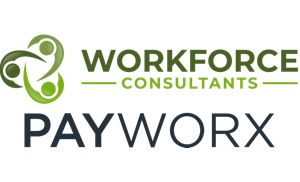
The Internal Revenue Service (IRS) has started the process of levying penalties on employers under the Affordable Care Act (ACA) employer shared responsibility provision. Often called the employer mandate or play or pay, the ACA provides for the IRS to assess penalties on employers that do not offer adequate health coverage to their full-time employees. Although the mandate took effect in 2015, the IRS is just now starting to send penalty notices. This article explains the IRS process and the steps you can take if you receive a penalty notice.
Looking Back to 2015: The first round of penalty notices pertains to calendar year 2015. Employers that receive a notice will only have 30 days to respond, so it is advisable for all employers to prepare in advance by reviewing what their situation was in 2015.
Applicable Large Employer (ALE): For 2015, the play or pay rules applied only to employers that had an average of 50 or more full-time employees, including full-time equivalents, in 2014. Related employers in a controlled group, such as parent-subsidiary groups and entities under common ownership, were counted together to determine whether they were ALEs. Non-ALEs were exempt from the mandate. Employer Mandate:
Penalties were triggered only if a full-time employee received a government subsidy to buy individual health insurance through a Marketplace. In that case, penalties for 2015 were based on a two-prong test:
- Penalty A if the ALE failed to offer minimum essential coverage to at least 70% of its full-time employees; or
- Penalty B if the ALE failed to offer affordable minimum value coverage to its full-time employees.
If triggered, Penalty A is $2,080 times the total number of full-time employees minus the first 80 employees. Penalty B is $3,120 times the number of full-time employees who actually received a Marketplace subsidy due to employer’s failure to offer that employee affordable minimum value coverage. Amounts are pro-rated by month. To calculate the monthly amount, divide $2,080 and $3,120 by 12. Also, if Penalty A applies, then Penalty B is disregarded.
ACA Reporting Forms (1094-C/1095-C):
ALEs were required to prepare and distribute Form 1095-C to persons who were full-time employees for any month in 2015 and to file copies with transmittal Form 1094-C to the IRS. The forms reported whether each full-time employee was offered health coverage and, if so, whether the coverage was affordable.
Transition Relief:
Several transition relief provisions were available for 2015.
For example:
- ALEs that had an average of 50-99 full-time-equivalent employees in 2014, and did not materially reduce their workforce or health coverage through 2015, were exempt from penalties.
- ALEs with non-calendar year health plans generally were exempt from penalties for the months preceding their 2015 plan year start date.
To take advantage of a transition relief provision, the ALE’s completed 2015 Form 1094-C must indicate the specific provision.
IRS Penalty Process
The IRS is using information from 2015 Forms 1095-C and 1094-C, and information about employees who received a Marketplace subsidy for any month in 2015, to determine which ALEs it believes are liable for penalties. It appears that a Form 1095-C on which line 16 is blank is one of the triggers the IRS is using to identify ALEs for penalty notices. The penalty process consists of the steps below.
- The IRS sends Letter 226J (notice and instructions) along with Form 14765 (list of employees who received a Marketplace subsidy) and Form 14764 (employer response form). ALEs are instructed to review the information and respond within 30 days.
- The ALE responds by completing and returning Form 14764. The ALE will check a box to indicate whether it agrees with the proposed penalty or disagrees with part or all of the proposed penalty. The form also requires the ALE’s contact information for additional follow-up.
- If the ALE responds by agreeing with the proposed penalty, the ALE will complete the payment option section of the form.
- If the ALE responds by disagreeing in whole or part with the proposed penalty, the IRS sends Letter 227 (not yet available). The follow-up letter will instruct the ALE on how to present supporting information for its case. The ALE also will have the option of requesting a pre-assessment conference with the IRS.
- If the ALE fails to respond to Letter 226J or Letter 227 in a timely manner, the IRS will issue Notice CP 220J as a demand for payment.
Action Steps
Employers are advised to gather information now so they are prepared to respond quickly if they receive an IRS penalty notice. Again, the first notice will be Letter 226J and the employer will only have 30 days to respond. To prepare:
- Alert all departments and staff to keep an eye out for any material from the U.S. Treasury or IRS. If part of a controlled group, confirm that subsidiaries or affiliated companies will notify each other if they receive any material.
- Ensure that copies of all 2015 Forms 1095-C and 1094-C are readily available. Many ALEs used third-party vendors to prepare their forms, so it may be necessary to contact the vendor.
- Identify staff and establish an audit process for comparing the IRS notice against employee data and benefits records.
- Upon receipt of Letter 226J, refer to legal counsel for assistance in preparing a timely response. Lastly, note that the majority of employers will not receive an IRS notice, either because the employer was too small to meet the ALE definition or because the employer’s Forms 1095-C and 1094-C did not trigger any IRS action. In any case, an employer will not be on the IRS radar unless at least one of its employees received a Marketplace subsidy.
The IRS provides information about the penalty process in question-and-answer format on its Understanding your Letter 226-J webpage. Employers and their advisors should check the webpage periodically for updated information.



